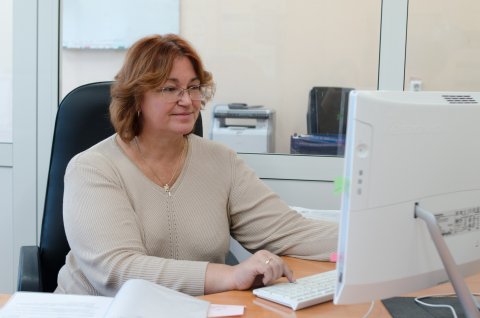Today, scientific pursuits are primarily based on the actual requirements of manufacturers. The main goal is to change manufacturing techniques to obtain a competitive final product. Researchers at South Ural State University are achieving this goal successfully. One of the examples is the development of methods of preparing products from carbon-graphite powders with high performance properties.
There are a few main methods of obtaining products from carbon-graphite materials. The first method (classic) is pressing of powders into a large block, which, after high-temperature firing, is separated into its main components, and then transformed to the necessary geometric characteristics. A team of researchers at our university has developed a new manufacturing technique. Marina Samodurova, Candidate of Engineering Sciences, Associate Professor of the Department of Machines and Processes of Pressure Metal Working, told us about the advantages of this technique and how the main characteristics of a final product change.
“The methods that were used earlier result in a fairly low density of the final product. We have set the following goals: develop a process for preparing a powder mixture consisting of graphite and a polymer binder; and develop tools, equipment, and new techniques for preparing products which make it possible to release a high-quality, competitive electrotechnical product on to the market. As a result of our scientific research, we have created a new technological cycle which makes it possible to significantly reduce the energy consumption of final products due to the exclusion of high-temperature, multiple-hour firing, and also increase the main quality indicators of final products (increased density and physical and mechanical characteristics).”
The specificity about this method is that the first step was the decision to choose the necessary percentages of polymer binder and graphite material, and not to radically change the components of this composition. The work was focused on the technique of pressing and choosing the optimal relationship between the components in the mixture.
.jpg)
“At the next stage, we paid a lot of attention to the process of pressure treatment. You must keep in mind that at this time, energy-consuming techniques of static hot pressing are used in closed, complex metal presses. What disadvantages of this method did we determine? The thing is that such factors as the product’s time exposed to air, and the temperature and humidity in the work area affect the quality of the final product. This is related to the fact that powder graphite is a very active material which interacts well with gasses and moisture in the air. If the mixture sits out in the work space for a certain amount of time before pressing, the density of the final product will be significantly lower than if we use a prepared composition right after its creation. The lower the density, the faster the final product will deteriorate. There is one more significant disadvantage to the existing technique – the mixture sticks to the walls of the press during pressing, which reduces the quality of the product. We proposed new methods and technical solutions for preparing the mixture,” explains Marina Nikolaevna.
Before pressing, the prepared mixture is held for 4-6 hours at a temperature of 70 to 90 degrees Celsius. This makes it possible to remove humidity and gasses as well as obtain a layer of polymer on the hard particles of novolac resins of a few micros, which prevents them from turning in to liquid upon contact with the heated walls of the press. This also prevents the liquid polymer from sticking to the walls of the die.
Holding the composition for less than 4 hours after mixture at a temperature of less than 70 degrees Celsius does not make it possible to obtain the necessary layer of polymer on the hard particles of the resin which protect the tools from wear. Keeping the composition for more than 6 hours at a temperature of more than 90 degrees Celsius before pressing leads to lower manufacturing efficiency.
“Graphite is a very hard material which is difficult to deform, and during its processing, damage occurs rather than deformation. Our goal is to obtain compact products with high performance properties without harming the characteristics that graphite offers for electrically conductive materials. The technique that we have developed is focused on improving the work characteristics and physical and mechanical properties of electrotechnical products.”
The results received have found use in the manufacture of products for current transfer (tram and trolley contact points, magnetic brushes for electric vehicles, magnetic brushes for propulsion engines, and other electrotechnical products.) But this technique makes it possible to prepare products for both electrotechnical and construction purposes.
“These are products used under special conditions,” explains Marina Nikolaevna, “Prepared with this method, their characteristics do not change during higher (and in some cases very high) temperatures up to 2500 degrees Celsius in aggressive environments under dynamic loads. Recently, this method was used to create presses for molding machines. In nuclear reactors they also use products made of carbon materials. Working with products made of graphite is common in all fields of manufacturing (power engineering, nuclear manufacturing, rocket building, aircraft engineering, and more).”
Today, products from graphite created with this technique are sent to almost all regions of Russia as well as countries of the CIS (Belarus, Kazakhstan, and more). The advantage of this method is not just the high density of the final product but the low cost of manufacturing. The amount of waste from pressing does not exceed 2-5%. In addition, this technology requires very little financing, since high-pressure firing is excluded.
At this time, many industries work with graphite. Within the walls of our university, research has been conducted in this area for more than 5 years. Graphite products and their application are one of the most promising areas of research, according to Marina Samodurova. The researcher notes the high potential of the developed technology and its broad manufacturing applicability.




